Kilim is a pileless, tapestry woven rug (or textile) with geometric designs in bright colors, traditionally originating in Anatolia, Turkey. Kilim is produced with a flat weaving technique and can be used in rugs, prayer rugs, wall hangings, table covers, bed spreads, furniture, bags, or even shoes.
Well, it’s a given that people aren’t gonna be doing much traveling the rest of 2020 (thanks COVID-19). In the meantime, I’m going to continue my series called History of a Trend! My other post in this series is the ever popular history behind Otomi embroidery.
This week we are featuring the always popular kilim rugs from Turkey. These days you see them populated everywhere on Instagram, Pinterest, and all those perfectly curated lifestyle blogs. It’s a wonderful way to turn your living room (or any room in your home) into a vacation destination while sheltering in place.
What is Kilim?
Kilim is a pileless, tapestry woven rug (or textile) with geometric designs in bright colors, traditionally originating in Anatolia, Turkey. Kilim is produced with a flat weaving technique and can be used in rugs, prayer rugs, wall hangings, table covers, bed spreads, furniture, bags, or even shoes. You can find kilim techniques in Pakistan, Central Asia, China, Iran, Afghanistan, North Africa, Morocco, the Caucasus, and the Balkans. These techniques from other countries may be called by other names such as cicim, palaz, soumak and zili depending on their origin.
The word “kilim” originates from the Persian word “gelim“, which means “to spread roughly”. There has been evidence of kilim rugs from the Çatalhöyük excavations as early as 7000 B.C.E.! Marco Polo also wrote about the beauty of kilim weaving during his travels in the 13th century.
…et ibi fiunt soriani et tapeti pulchriores de mundo et pulchrioris coloris. “…and here they make the most beautiful silks and carpets in the world, and with the most beautiful colours.”
Marco Polo, Travels of Marco Polo
Women Artisans
Traditionally antique and authentic kilim rugs were made by tribal women. These days, workshops consist of both women and men and are often created for the international market.
In tribal societies, kilim were woven by women at different stages of their lives: before marriage, in readiness for married life; while married, for her children; and finally, kilim for her own funeral, to be given to the mosque. Kilims thus had strong personal and social significance in tribal and village cultures, being made for personal and family use.
Wikipedia on kilim
Process
Kilim weaving is very laborious, with the average 6’x9′ rug taking about 12-16 weeks to finish, depending on the details in the design. Kilim/flatweave rugs often feature geometric symbols because of the technique of using colored weft threads through the warp, leaving a slit. I personally have no idea what that means, but perhaps if you are a weaver or seamstress you would understand.
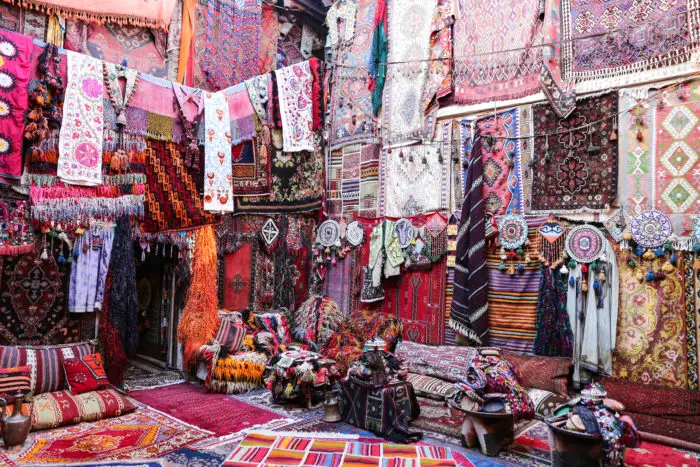
You can tell if a rug is handmade if you flip it over and the design is clearly visible on the back. If the design is obscured or hard to see, it is probably machine-made.
Kilim motifs and symbols
Oftentimes, these rugs were toiled on for months or years and stashed away in a potential bride’s trousseau or hope chest before marriage throughout Turkey.
Symbolism on kilim rugs often pertains to good luck charms, wishes for fertility and longevity in marriage, and protection against the evil eye.
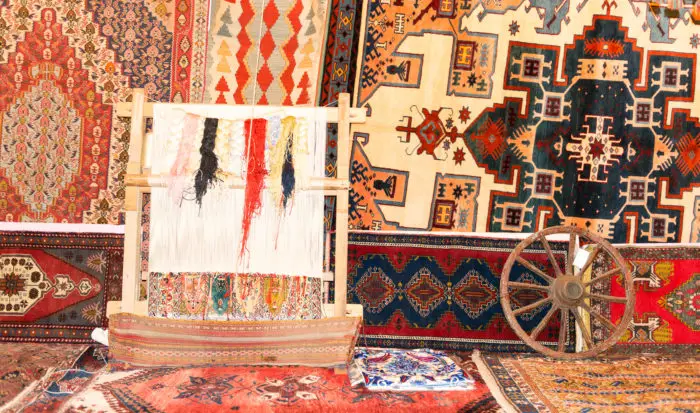
Here are some of the most common symbols you might find on a rug and what they symbolize (according to Wikipedia):
| Symbol | Picture | Meaning |
|---|---|---|
| Hands-on-hips | Elibelinde is an Anatolian symbol of the mother goddess and a mother with a child in the womb. It commonly signifies fertility and abundance | |
| Cross | A protective symbol to divide the evil eye into four | |
| Eye | A protective symbol to ward off the evil eye | |
| Hook | Protection to destroy the evil eye | |
| Comb |  | Symbolizes rain and water of life |
| Running Water |  | Fresh water, important to tribal life |
| Fertility | Combines the hands-on-hips and ram’s horn for a merging of female and male | |
| Ram’s Horn | Symbolizes masculinity and power | |
| Star |  | Solomon’s seal or a starlike flower |
| Love & Unison |  | Derived from yin & yang symbol |
| Amulet | Protection and luck sewn into a square of cloth folded into a triangle | |
| Bird |  | Various birds symbolize good and bad luck, and souls of the dead |
| Fetter |  | To bind families and lovers together |
| Trousseau chest |  | Unmarried women prepare their dowry in a trosseau chest |
| Earring |  | Common wedding gift |
| Wolf’s Mouth/Track | Protection of the flocks | |
| Scorpion |  | Protection symbol |
| Dragon | Master of air and water | |
| Tree of life |  | Immortality, longevity |
| Burdock |  | Plant used to ward evil eye and flowers to symbolize abundance |
Best places to find it
Turkey! If you have the opportunity and the luxury, try going to a rug dealer in Turkey. Rug dealers are friendly and eager to make a sale. Try to haggle down at least 10-20% if you are buying in a major city like Istanbul. Expect to pay at least $500 USD for a room sized version of the real thing. You may be able to find a deal, but make sure to touch and examine the rug to see if it’s the real thing. Remember, the back is where you can tell if it was handwoven or made by a machine. Expect to pay more if it is a hand woven rug, of course.
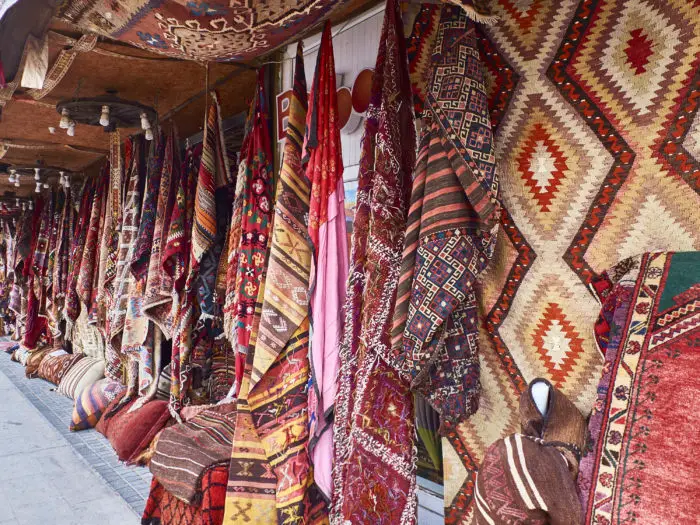
You will pay more in major shopping bazaars and in tourist centers than in smaller, independent shops. The region of Anatolia is generally known as the originator of kilim rugs, so this is another great place to look for the intrepid collector.
There are also several places online you can find it below.
Shop Turkish kilim rugs online:
So now you’ve found the kilim rug of your dreams. Luckily for you, it’s easy to take care of, as kilim rugs are known for their durability. Vacuum regularly on the lowest setting. If you have a vintage piece, take it to a professional cleaners when you start to notice fading once a year.
I hope you enjoyed this post! I think I might continue this series during quarantine, and write about Japanese Shibori dying, Murano glass, and whatever else my dear readers would like to learn about. Are there any other trends you are curious about?
Pin it:
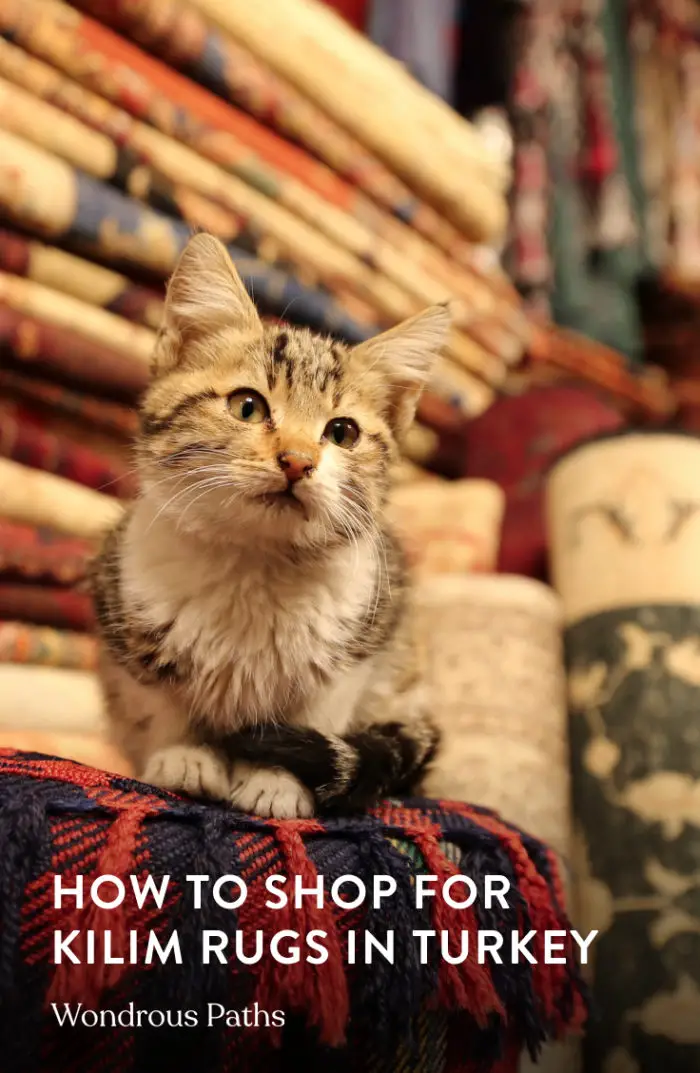


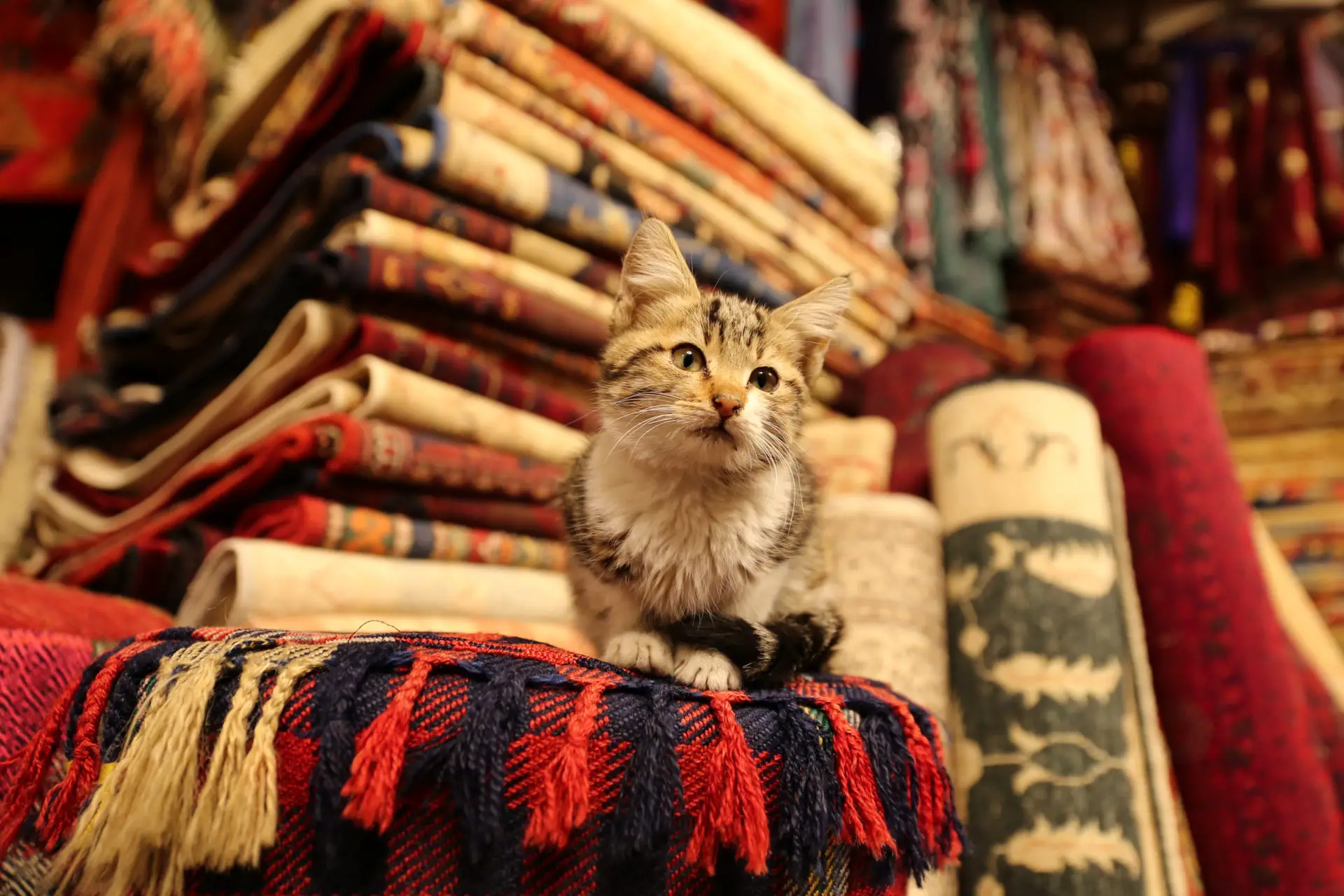
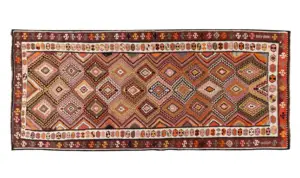
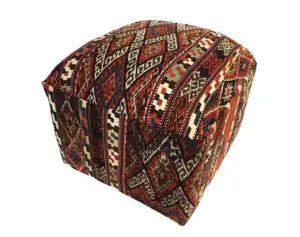
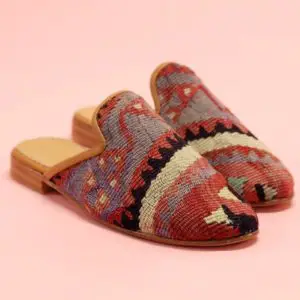
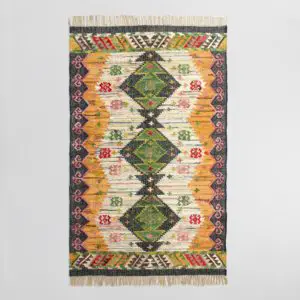
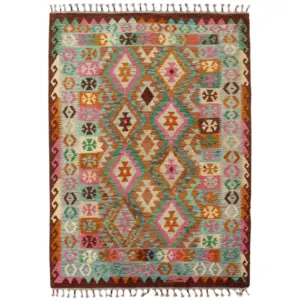
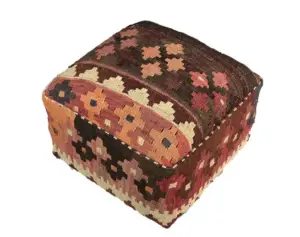


Amazing blog. The kilim rugs that originally came from Iran and present-day Afghanistan, where they were mostly made by women using looms. Just like a sisal rug, the traditional kilim is characterized by its firm, flat-woven structure which makes it particularly strong and easy to maintain.